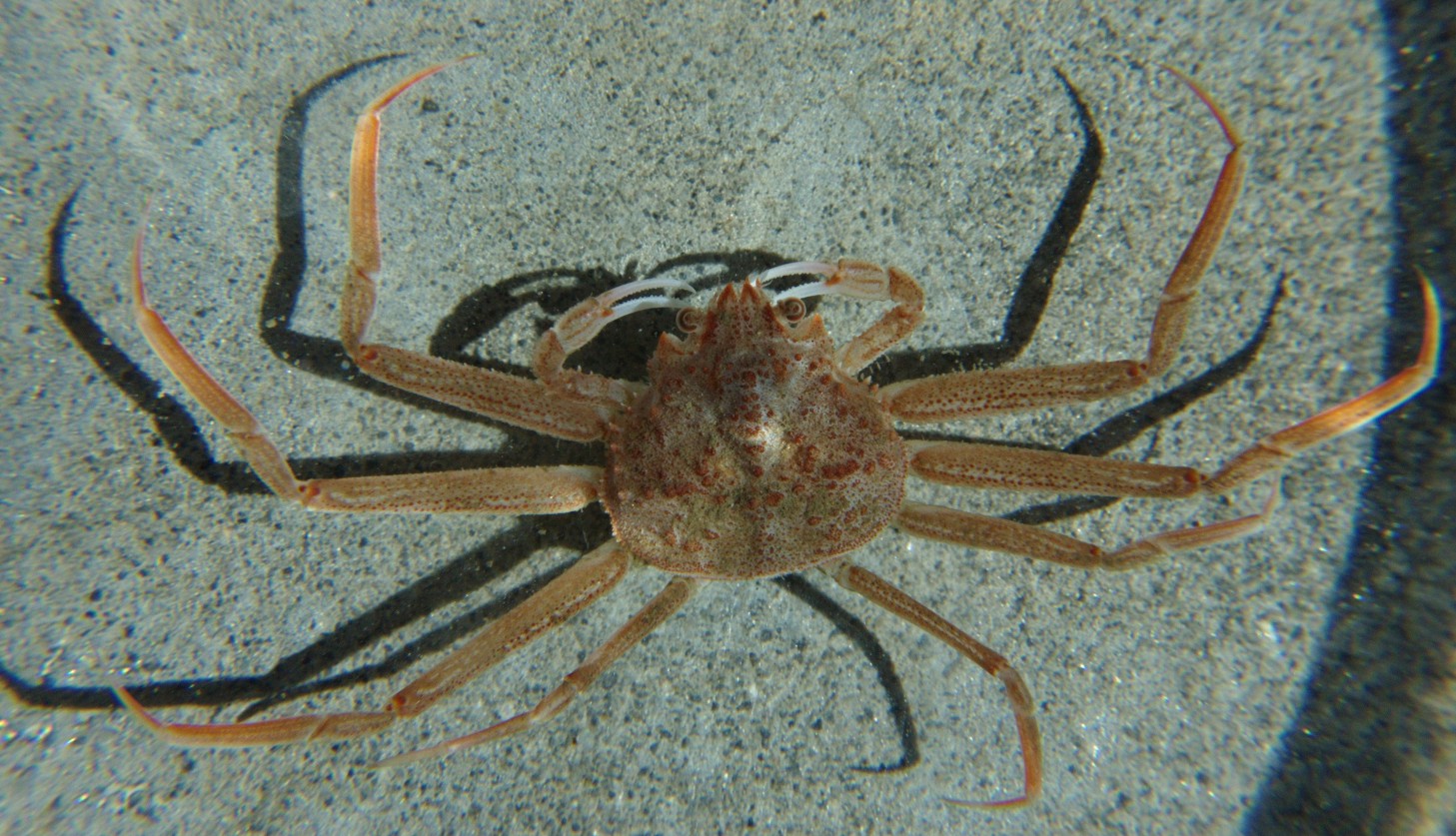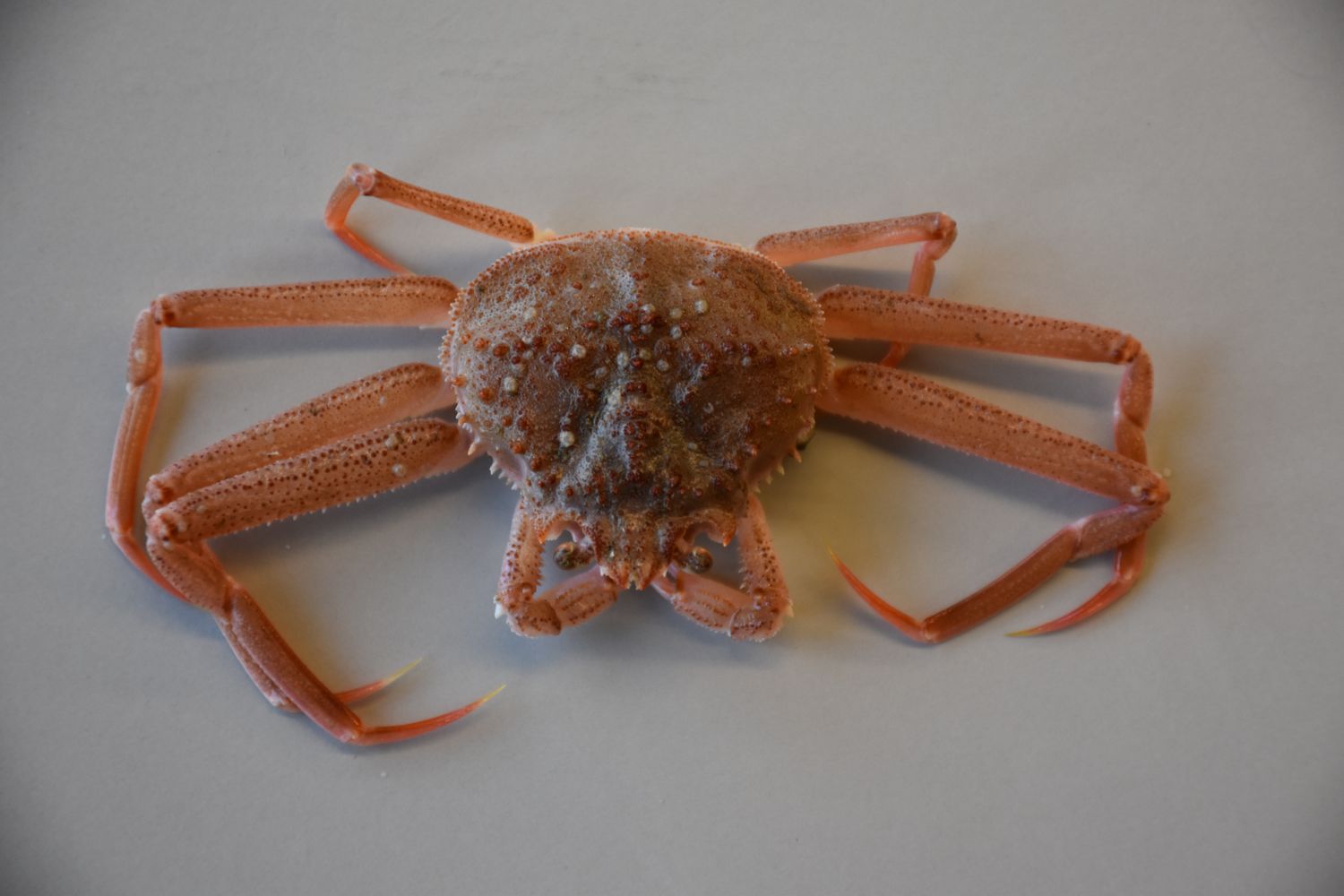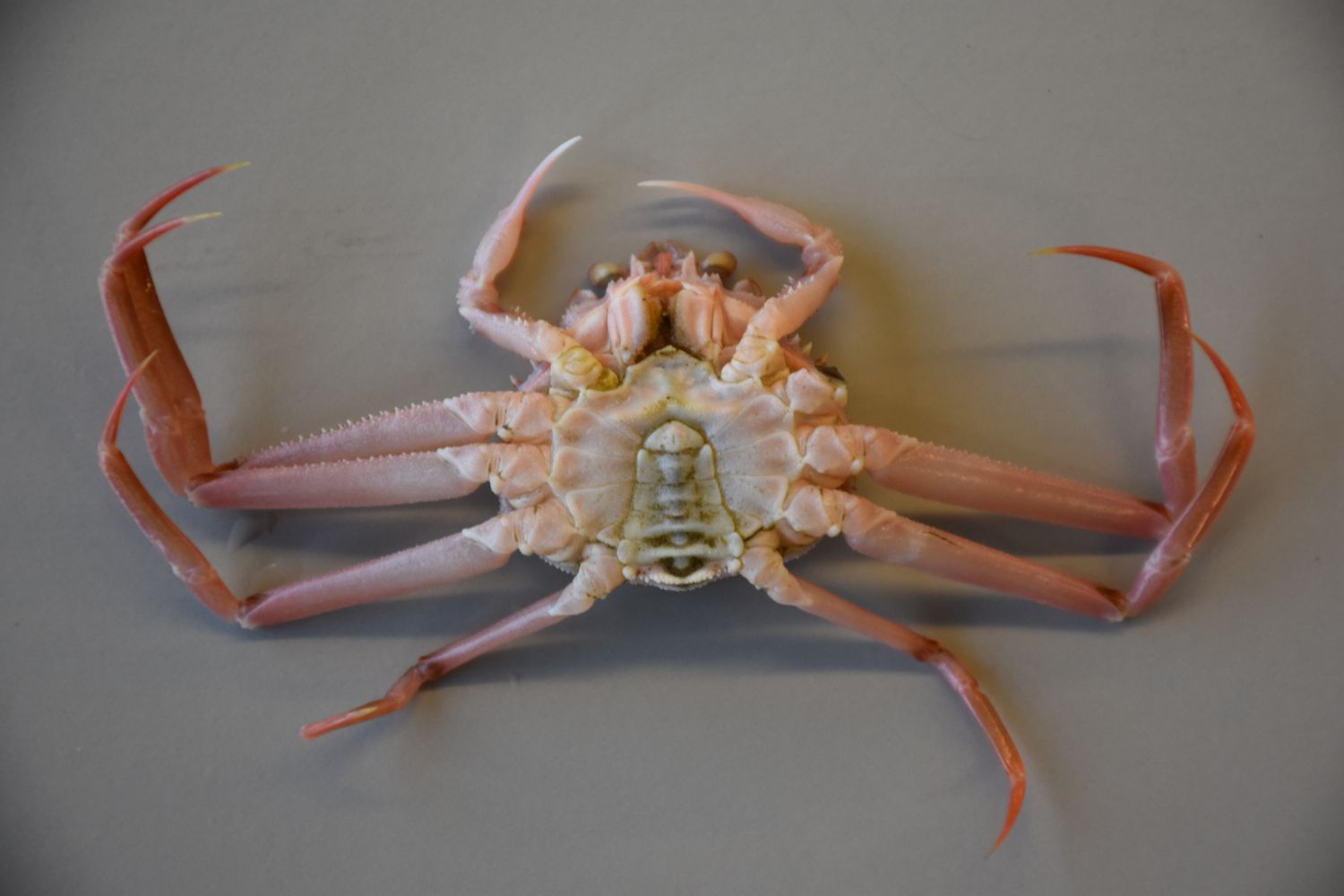Chionoecetes bairdi Rathbun, 1893Common name(s): Tanner crab, Southern tanner crab, snow crab, cobbler crab |
|
| Synonyms: Chionoecetes opilio (those found south of Alaska) |  |
|
Phylum Arthropoda
Subphylum Crustacea
Class Malacostraca
Subclass Eumalacostraca
Superorder Eucarida
Order Decapoda
Family Oregoniidae (formerly in Family
Majidae)
|
|
| Chionoecetes juvenile captured at 250-300 foot depth in San Juan Channel. Carapace width 2.75 cm. | |
| (Photo by: Dave Cowles, July 2011) | |
How to Distinguish from Similar Species: Chionoecetes tanneri (C. angulatus?) has a rostrum which turns dorsally. It is mainly found at depths below 1000 m. style="font-style: italic;">C. opilio is an arctic species common near the Aleutian Islands, with carapace length and width nearly equal and less spines on the carapace. Most other crabs from family Majidae, which look similar, have a carapace longer than wide (except for Mimulus foliatus, in which the carapace margins are expanded into winglike flanges).
Geographical Range: Northern Alaska to central Oregon
Depth Range: 6 to 475 m
Habitat: Subtidal, Sandy or muddy bottoms
Biology/Natural History: This crab is
harvested commercially in Alaska as the snow crab, although that harvest
is mostly of the relative C. opilio.
Predators include sea otters in Alaska. The egg masses of this species
may be parasitized by a tiny Nemertean worm Carcinonemertes
regicides. A leech, Notostomium
cyclostoma, which feeds off fishes lays its eggs on the crab carapace.
The leeches do not appear to feed on the crab. It may also be parasitized
by the dinoflagellate Hematodinium.
This crab has a terminal molt. Females reaching their terminal molt breed
for the first time while still soft from molting, but can breed again while
still hard. They store sperm (from male spermatophores)
in their spermatheca. Males first produce spermatophores
when about 45 mm carapace
width, but larger males produce more spermatophores.
Females may become sexually mature by about 55 mm carapace
width but may be as large as 85 mm carapace
width (Paul, 1992).
| Return to: | |||
| Main Page | Alphabetic Index | Systematic Index | Glossary |
References:
Dichotomous Keys:Coffin, 1952
Kozloff 1987, 1996
General References:
Hart,
1982
Lamb
and Hanby, 2005
O'Clair
and O'Clair, 1998
Scientific Articles:
Burnett, Nicole, 2024: A practical identification guide to the zoeae of the invasive European green crab, Carcinus maenas (Linnaeus, 1758) (Decapoda: Brachyura: Carcinidae), and to the zoeae of the families of brachyuran crabs in Washington state, USA. Journal of Crustacean Biology 44:4. doi.org/10.1093/jcbiol/ruae064
Myers, T.C., T.M. Botelho, T.M. Koeneman, S. Short, and K. Inamura, 1990. Distribution of bitter crab dinoflagellate syndrome in southeast Alaskan Tanner Crabs Chionoecetes bairdi. Dis. Aquat. Org. 9: pp. 37-43
Paul, A.J., 1992. A review of size a maturity of male tanner (Chionoecetes bairdi) and King (Paralithodes camtschaticus) crabs and the methods used to determine maturity. American Zoologist 32: pp. 534-540
Web sites:
General Notes and Observations: Locations, abundances, unusual behaviors:
This closeup shows the rostrum, the spines on the anterolateral margins of the carapace, the chelipeds, and the eye pattern. Photo by Dave Cowles, July 2011.
A photo of another individual clearly shows the small spines lining
the anterolateral
carapace.
Captured by Kirt Onthank by SCUBA at about 20 m depth at night in Burrows
Bay. Photo by Dave Cowles, August 2015
| These images of the underside of a male show the shape of the abdomen and the specialized first pleopods underneath. Carapace width on this individual is 3.5 cm. Photos by Dave Cowles, August 2015 | |
| Ventral abdomen | Abdomen folded back to show pleopods |

A dorsal view of the same individual.
This closeup of the chelae
shows that the chelipeds
are relatively short but with small spines and granules. The base
(palm) of the propodus
is swollen and slightly elongated. The fingers of the chelae
are long and narrow and are serrated with sharp teeth.
Authors and Editors of Page:
Dave Cowles (2011): Created original page
CSS coding for page developed by Jonathan Cowles (2007)

